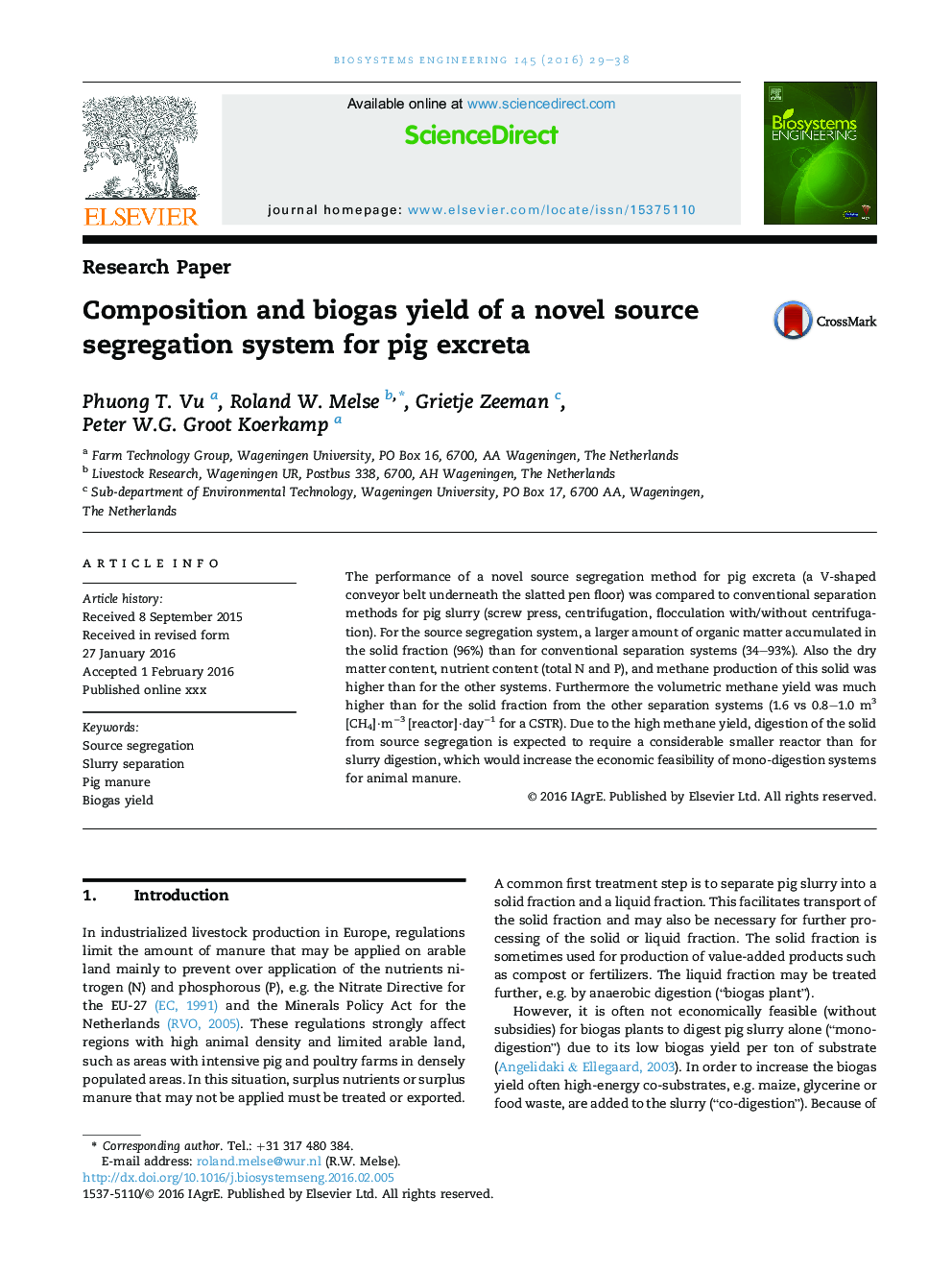| Article ID | Journal | Published Year | Pages | File Type |
|---|---|---|---|---|
| 8055151 | Biosystems Engineering | 2016 | 10 Pages |
Abstract
The performance of a novel source segregation method for pig excreta (a V-shaped conveyor belt underneath the slatted pen floor) was compared to conventional separation methods for pig slurry (screw press, centrifugation, flocculation with/without centrifugation). For the source segregation system, a larger amount of organic matter accumulated in the solid fraction (96%) than for conventional separation systems (34-93%). Also the dry matter content, nutrient content (total N and P), and methane production of this solid was higher than for the other systems. Furthermore the volumetric methane yield was much higher than for the solid fraction from the other separation systems (1.6 vs 0.8-1.0 m3 [CH4]·mâ3 [reactor]·dayâ1 for a CSTR). Due to the high methane yield, digestion of the solid from source segregation is expected to require a considerable smaller reactor than for slurry digestion, which would increase the economic feasibility of mono-digestion systems for animal manure.
Related Topics
Physical Sciences and Engineering
Engineering
Control and Systems Engineering
Authors
Phuong T. Vu, Roland W. Melse, Grietje Zeeman, Peter W.G. Groot Koerkamp,
